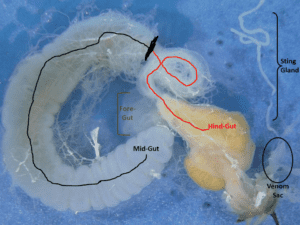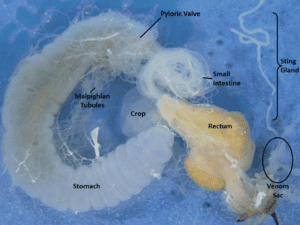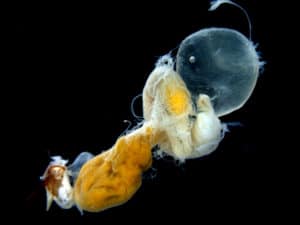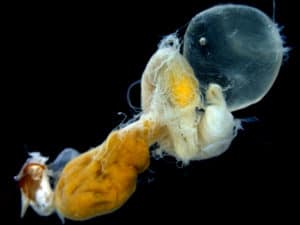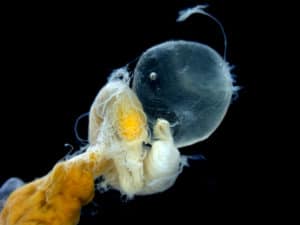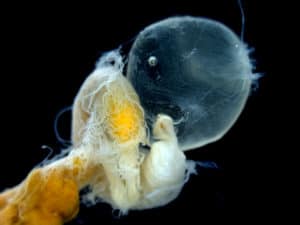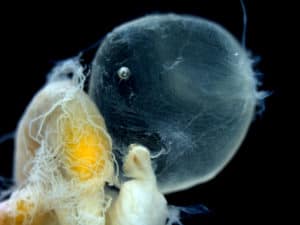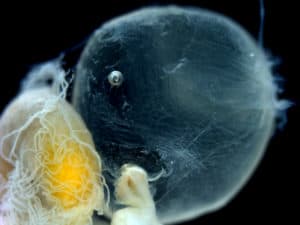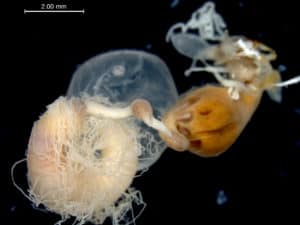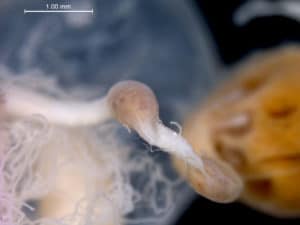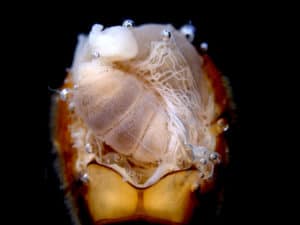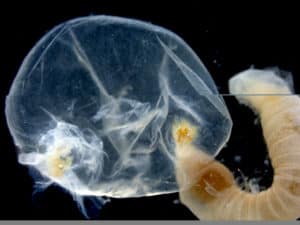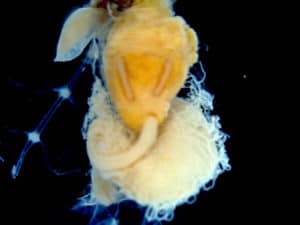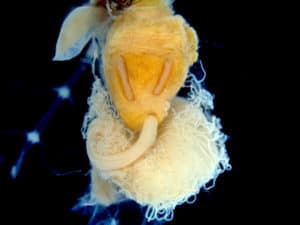In December I was asked to visit our diagnostic lab at the University of Maryland to check on the status of a stereo-scope that will be utilized at the vanEngelsdorp Lab for a variety of applications related to honey bee research. The microscope was previously housed at our office in Oroville, CA (Butte County Cooperative Extension 2279B Del Oro Ave.) Because the scope was being under-utilized by members of our team the decision was made to ship it to the University of Maryland where it would be used for things like honey bee necropsies and tracheal mite testing by students and our diagnostic team.
One of the other requests I received was to introduce the basics of honey bee dissections to those working in the Maryland lab. It has been quite some time since I have done any dissections on bees and the training reminded me of a paper I had come across when first learning the internal anatomy of honey bees. There is too much information in the paper to summarize here and I won’t insult Dr. Bailey by making an attempt at doing so, but anyone interested in understanding more about honey bee physiology can do so by clicking the link below. The link will direct you to the Journal of Experimental Biology where you can view a free full text version of Bailey’s article; THE ACTION OF THE PROVENTRICULUS OF THE WORKER HONEYBEE, APIS MELLIFERA L.
http://jeb.biologists.org/content/29/2/310.full.pdf+html
Experimentation was done by Dr. Bailey in response to controversy surrounding the mode of action of the proventriculus. Bailey was investigating Nosema apis infections of the ventriculus and needed information on the passage of pollen grains through the intestine. The proventriculus is a very complex organ situated between the crop (honey stomach) and the ventriculus (functional stomach where food is processed). It functions for the purposes of regulating the entrance of food from the crop into the ventriculus, retaining nectar in the crop for feeding and the transportation of nectar from the field to the hive.
Bailey designed experiments that would observe the movement of food materials through the alimentary canal with particular emphasis on the modes of action and timing of the processes involved. The experiments were done around 1950 and at the time the technology to video record such a procedure was not available. That is not true in today’s day and age. I would love to see someone repeat this experiment and video record the processes involved. At the top of this page are some images I collected while doing my own dissections. Most of the dissections from the images above were from live bees collected in the field, frozen on dry ice, stored at -80 degrees, and then thawed and dissected in bee Ringers solution (155mM NaCl, 3mM KCl, 2mM CaCl2).
Bailey’s methods are summarized below:
-Hazel pollen and pollen taken from the pollen baskets of bees were stained bright red with magenta red, suspended in clear syrup and fed to starved individual worker bees from a capillary pipette.
-For observations on the passage of pollen down the midgut the whole gut was pulled out of the abdomen of the anaesthetized bee by cutting off the head and pulling out the last abdominal segment with forceps.
-To show the state of the pollen, slit the ventriculus with fine needles, or dehydration and clearing in cedar-wood oil
-For observations of the action of the proventriculus the starved bee was anaesthetized with chloroform or ether and secured ventral side uppermost to soft wax block.
-A window was carefully cut out of the sternites with a sharp razor. The film of the fat body was carefully pushed aside with blunt needles, and the proventriculus was then easily visible when illuminated directly with a focusing lamp.
-Care was taken not to injure the ventral nerve cord and ganglia
-Occasionally the window was moistened with a drop of saline (0.75% NaCl, 0.02% KCl, 0.02% CaCl2 buffered to pH 6.7 with Na2HPO4 and HCl). If the drop of saline was large enough, the illumination of the proventriculus was aided by its additional focusing effect
I was amazed and perplexed by the intricacies of such a procedure being performed on honey bees. I think what stunned me the most was that if the dissections were done with care (minimal damage to the nerve cord, trachea, air sacs, etc.) the action of the proventriculus could be observed through the window cut in the abdominal plates for up to an hour. I have never attempted the procedure but would like to try it sometime…
